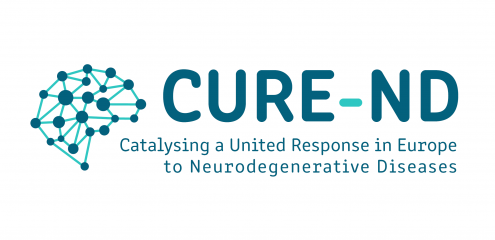
Minimally invasive brain stimulation to delay cognitive decline
Experts
Coordinator
Peter Janssen (KU Leuven)
Partners
Myles Mc Laughlin (KU Leuven)
Mathieu Vandenbulcke (UZ Leuven)
Tom Theys (UZ Leuven)
Nick Van Helleputte (imec)
Chris Van Hoof (imec, KU Leuven)
Natalia Gunko (VIB-KU Leuven)
Nir Grossman (Imperial College London, UK DRI)
Why
Drug development for neurodegenerative diseases has been very challenging and largely unsuccessful. Researchers are increasingly looking at alternative therapies, one of which is electrical brain stimulation. This strategy has already been used for a while in humans, for instance to eleviate the motor symptoms in Parkinson's disease patients.
Brain stimulation could also be beneficial to Alzheimer's disease patients, because that disease is also associated with abnormal activity of important brain networks. In animal models, brain stimulation was able to counteract two major hallmarks of Alzheimer's disease: the abnormal build-up of a toxic protein called amyloid-beta, and the activation of microglia, the immune cells of our brain.
Moreover, brain stimulation holds potential to boost the communication between brain cells and the generation of new cells, all of which could slow down neurodegeneration and cognitive decline.
How
We are developing a new, minimally invasive method to stimulate deep brain networks, especially those involved in memory and cognition. We envision to design a compact, fully portable device, allowing long-term treatment with the new brain stimulation method while the patient is at home.
Brain stimulation alone may not cure neurodegeneration, but it could help to delay the onset of cognitive decline by several years, which would make a crucial difference to millions of people. While our initial focus is on Alzheimer’s disease, such a new brain stimulation tool could also be applied to other neurodegenerative diseases in the future.
Partners
Publications
- Peeleman et al. 2023 (Brain Stimulation conference abstract) Selective hippocampal activation and memory enhancement caused by epicranial electrical stimulation
-
Peeters et al. 2023 (Frontiers in Neuroscience) Towards biomarker-based optimization of deep brain stimulation in Parkinson's disease patients.
This study on deep brain stimulation (DBS) in Parkinson’s disease found that evoked potentials, measured with EEG, can accurately predict clinical responses to the treatment. Future refinement of this approach may streamline DBS programming, thereby improving therapeutic outcomes.
-
Majdi et al. 2022 (Frontiers in Neuroscience) Deep brain stimulation for the treatment of Alzheimer's disease: A systematic review and meta-analysis.
This meta-analysis looked at all published studies on DBS applied to AD and found inconsistencies and mixed results. Grouping the results from the few available studies together, DBS appeared to have no impact on the cognitive ability in patients with AD, but the authors conclude that further studies with larger sample sizes and randomized, double-blinded, sham-controlled designs are required.
-
Romero et al. 2022 (eLife) Neural effects of continuous theta-burst stimulation in macaque parietal neurons.
This study investigated the effects of continuous theta-burst stimulation (cTBS), a form of brain stimulation that is widely used in human neuroscience research, on single neurons in awake behaving monkeys.
- van Boekholdt et al. 2020 (Mol Psychiatry) tDCS peripheral nerve stimulation: a neglected mode of action?
- Asamoah et al. 2019 (Nature Communications) tACS motor system effects can be caused by transcutaneous stimulation of peripheral nerves
- Khatoun et al. 2019 (Front Neurosci) Investigating the Feasibility of Epicranial Cortical Stimulation Using Concentric-Ring Electrodes: A Novel Minimally Invasive Neuromodulation Method
- Romero et al. 2019 (Nature Communications) Neural effects of transcranial magnetic stimulation at the single-cell level
In this study led by Peter Janssen, macaque monkeys received transcranial magnetic brain stimulation while they were performing a motor task, revealing insights in the effects of brain stimulation at the single-cell level.


